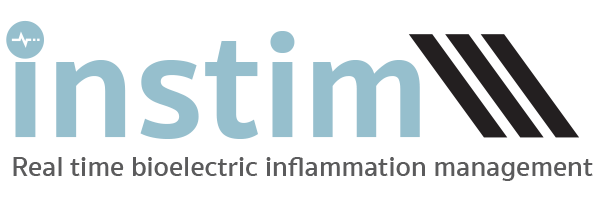INSTIM FAQ’S
Q1 - What is the InStim therapy?
The InStim therapy is designed to get inflammation under control via real time monitoring and real time adjustments to both bioelectric signaling and biologics therapies. The first line of therapy is 100% bioelectric, preferably non-invasive, and only if this is not successful a second wave of biologics therapy via a re-fillable micro infusion pump is included. Biologics therapy may include stem cells, exosomes, PRF, PRP, Micro RNAs, nutrient hydrogel, organ specific matrix, oxygenated nanoparticles and selected alkaloids.
Q2 - What inflammatory and anti-inflammatory cytokines does the InStim bioelectric therapy seek to modulate to get inflammation under control?
Q3 - What is the importance of real time monitoring and real time therapy?
The same cytokine delivered at the wrong time at the wrong dose can worsen inflammation but if delivered at the right time in the right dose can reduce inflammation. A certain level of inflammation in a certain sequence is essential to healthy healing but chronic inflammation can be a root cause of many diseases including cancer. The primary purpose of real time treatment is to end chronic inflammation.
Q4 - How does bioelectric signaling work as a therapy?
Q5 - How does InStim know what bioelectric signals to deliver when?
Real-time noninvasive monitoring of in vivo inflammatory … – NCBI – NIH
Adv Healthc Mater. 2014 Feb;3(2):221-9. doi: 10.1002/adhm.201200365. Epub 2013 Jul 5. Real-timenoninvasive monitoring of in vivo inflammatory responses …
Intravital endoscopic technology for real-time monitoring of …
Mar 19, 2018 – Intravital endoscopic technology for real-time monitoring of inflammation caused in experimental periodontitis. Movila A(1), Kajiya M(2), …
CONTINUOUS MONITORING OF INFLAMMATION BIOMARKERS …
The ability to monitor inflammation biomarkers during CPB will allow surgical teams … Therefore, these types of studies are not capable of real-time monitoring of …
In-vivo and real-time ultrasonic monitoring of red blood cell …
It could therefore represent a real-time inflammation monitoring instrument for patient care. However, the relationship between markers of inflammation during …
A Real-Time Tracking System Developed to Monitor Dangerous …
Oct 22, 2014 – Johns Hopkins scientists have developed a real-time tracking system … of the Center for Inflammation Imaging and Research at Johns Hopkins.
Modulation of Early Inflammatory Response by Different Balanced and …
journals.plos.org/plosone/article?id=10.1371/journal.pone.0093863
Apr 7, 2014 – A modulation of the inflammatory response caused by the different type …. RNA extraction and real-time PCR for cytokine-induced neutrophile …
References
Exploring Instructive Physiological Signaling with the Bioelectric …
To improve understanding of these dynamics and facilitate the development … However, endogenous bioelectric signals represent a parallel regulatory …. fungal infection (Gow and Morris, 1995), inflammation, and cancer (Soler et al., 1999).
Nature’s Electric Potential: A Systematic Review of the Role – NCBI – NIH
Sep 4, 2017 – Levin adds (2013) that “bioelectric patterning information can be …… are involved in all three stages of wound healing (namely inflammation, …
Bioelectric regulation of innate immune system function in … – Nature
May 26, 2017 – The role of immune response in regenerative events is an exciting …… Levin, M. Bioelectric mechanisms in regeneration: unique aspects and …
Bioelectric mechanisms in regeneration: unique aspects and future …
May 3, 2009 – … aspects and future perspectives. Michael Levin, Ph.D. … Keywords: regeneration, bioelectricity, ion channel, transmembrane potential. Go to: …
1.1. Bioelectricity: Why Model Electrical Activity in Non-Neural Cells?
1.2. Local and Long-Range Order in Bioelectrical Networks
“Inflammation cannot be managed with a single drug or single bioelectric signal. The body produces inflammation to promote healing and the right cytokines at the right time in the right sequence greatly aide in healing. The very same cytokines at the wrong time in the wrong sequence and at the wrong levels for the wrong duration can cause detrimental damage to health. Our invention is the first to read real-time these inflammatory and anti-inflammatory cytokines and to deliver multiple cytokine up or down regulation real time to best attempt to gain the right inflammatory balance.”
Get in touch.
